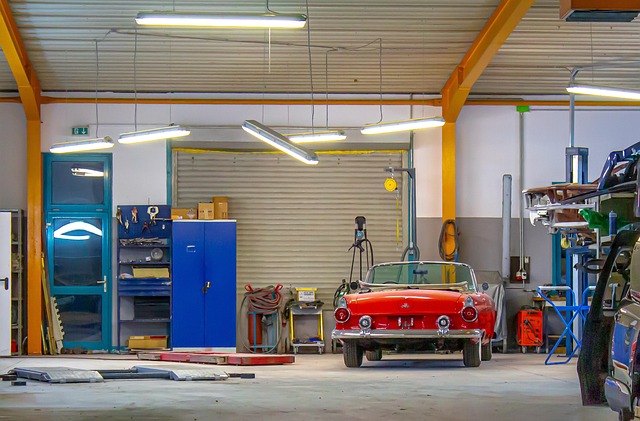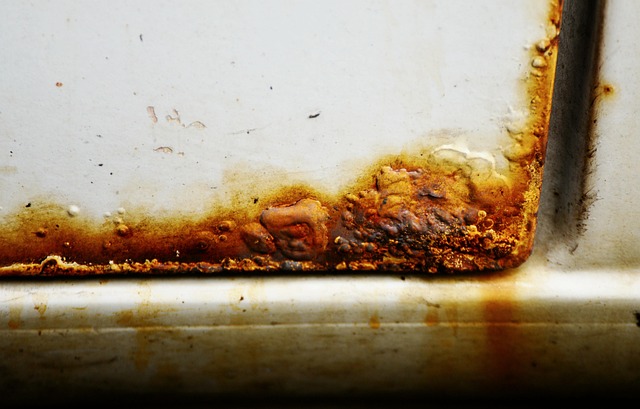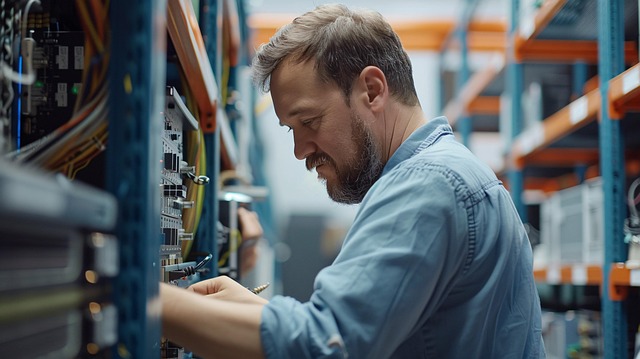Mastering Pre-Delivery Inspection: Structural vs. Cosmetic Damage
A pre-delivery inspection is a critical process ensuring vehicle quality and safety before delivery……..
Pre-delivery inspection (PDI) is a critical process that ensures the quality, safety, and compliance of products or goods before their final delivery to customers. It serves as a vital checkpoint, enabling businesses and consumers alike to make informed decisions, mitigate risks, and maintain high standards. This article aims to provide an in-depth exploration of pre-delivery inspection, covering its definition, global impact, economic implications, technological innovations, regulatory frameworks, challenges, successful case studies, and future prospects. By delving into these aspects, readers will gain a comprehensive understanding of the significance and evolving landscape of PDI in today’s interconnected world.
Pre-delivery inspection is a meticulous process where goods or products are examined and evaluated before their intended delivery to ensure they meet specified standards, specifications, and quality criteria. This inspection involves multiple stages, typically encompassing:
The concept of pre-delivery inspection has evolved over centuries, reflecting changes in trade practices, consumer protection laws, and technological capabilities. Historically, PDI can be traced back to ancient merchant empires, where merchants would inspect goods upon arrival to ensure they matched the agreed-upon quality and quantity. However, it was during the Industrial Revolution that PDI gained significant importance with the rise of mass production and global trade.
In modern times, pre-delivery inspection has become a cornerstone in supply chain management, ensuring product integrity, preventing costly returns or recalls, and fostering trust between buyers and suppliers. It plays a pivotal role in various industries, including manufacturing, pharmaceuticals, food and beverage, electronics, and automotive, where quality and safety are paramount.
Pre-delivery inspection has a profound global impact, shaping international trade practices and consumer expectations. Key factors driving its influence include:
Different regions around the world have unique approaches and trends in pre-delivery inspection:
| Region | Notable Trends |
|---|---|
| North America | Stricter environmental and safety regulations, increased use of automation in inspection processes. |
| Europe | Emphasis on digitalization and paperless trade, implementation of the EU’s New Legal Framework for Food. |
| Asia Pacific | Rapid e-commerce growth driving innovation in PDI technologies, focus on product traceability and transparency. |
| Middle East & Africa | Growing adoption of advanced inspection techniques to meet international standards, emphasis on food safety and quality. |
The pre-delivery inspection market is influenced by several economic factors:
Investments in pre-delivery inspection technologies and services are on the rise, driven by:
Technological advancements have revolutionized pre-delivery inspection, increasing efficiency, accuracy, and speed:
These technological innovations have significantly improved PDI capabilities, allowing for:
In the future, PDI is expected to further integrate AI, IoT, and blockchain technologies, enabling:
Pre-delivery inspection is heavily influenced by various policies and regulations, which vary across jurisdictions:
Policies and regulations play a crucial role in shaping the PDI landscape by:
Despite its benefits, pre-delivery inspection faces several challenges:
Some criticisms of PDI include:
The US Food and Drug Administration (FDA) employs advanced computer vision systems to inspect food products, ensuring they meet safety and quality standards. This technology identifies defects with high accuracy, reducing the risk of contaminated products reaching consumers. As a result, the FDA has seen improved product quality and a significant reduction in food-borne illness outbreaks.
Chinese e-commerce giant Alibaba Group has implemented an extensive PDI system for its vast inventory of products. Using RPA and AI, they automate initial checks, sort items, and perform quality assessments, ensuring efficient and consistent inspection across their massive supply chain network. This system has enhanced customer satisfaction and enabled Alibaba to handle high order volumes during peak seasons.
A leading pharmaceutical company uses IoT sensors and real-time data analytics to monitor product storage conditions during transportation. These sensors provide temperature and humidity readings, ensuring compliance with critical quality requirements. By analyzing this data, the company can predict potential stability issues and take proactive measures, maintaining product integrity throughout the supply chain.
The future of pre-delivery inspection holds immense promise in several areas:
To stay ahead in the evolving PDI landscape, businesses should:
Pre-delivery inspection is a critical process that ensures product quality, safety, and compliance, fostering trust in global supply chains. It has evolved significantly over time, driven by technological advancements, increasing regulatory requirements, and evolving market dynamics. Despite challenges, PDI continues to be a powerful tool for businesses and consumers alike, shaping the future of international trade and product inspection. As technology advances and global interconnectedness grows, pre-delivery inspection will play an even more vital role in ensuring consumer safety, maintaining brand reputation, and driving economic growth.
Q: What is the primary goal of pre-delivery inspection?
A: The primary goal is to ensure that products meet specified quality standards, comply with regulations, and are safe for their intended purpose before final delivery to customers.
Q: How does PDI benefit businesses?
A: PDI benefits businesses by reducing returns, minimizing recalls, protecting brand reputation, ensuring compliance, and optimizing supply chain operations. It also helps in identifying and addressing issues early in the production or transportation process.
Q: What are some common challenges faced during PDI?
A: Common challenges include time and cost constraints, skilled workforce shortages, keeping up with technological changes, and navigating global regulatory disparities.
Q: How can technology enhance pre-delivery inspection?
A: Technology, such as computer vision systems, AI, IoT, and RPA, significantly enhances PDI by improving efficiency, accuracy, and speed. It enables real-time quality control, data-driven decision-making, and predictive capabilities, shaping the future of PDI.
Q: What role do regulations play in pre-delivery inspection?
A: Regulations set standards, provide enforcement mechanisms, and protect consumers. They ensure consistent product inspections across industries and facilitate international trade by establishing harmonized procedures and documentation requirements.

A pre-delivery inspection is a critical process ensuring vehicle quality and safety before delivery……..

A pre-delivery inspection (PDI) is a crucial process ensuring vehicles meet safety and quality stand…….

A Pre-Delivery Inspection (PDI) is a crucial step in the automotive industry, particularly for body…….

A pre-delivery inspection is a vital auto body shop procedure ensuring vehicle quality and customer…….

Pre-delivery inspection is a vital quality control step for auto glass and window frame repairs, ens…….

A pre-delivery inspection is a crucial quality control measure in automotive services, where skilled…….